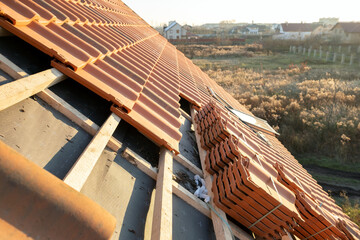Whether you are building a new business or remodeling your existing home, you need the help of a general contractor to bring your vision to life. GCs are responsible for day-to-day operations, quality control and deadlines on construction sites.
They also maintain a license to operate in their areas of expertise. Hiring managers look for quantified examples of these skills on resumes. Contact General Contractor Richmond VA now!

A general contractor takes on many different roles in a construction project. They function much like a manager role in other businesses, communicating with those who are paying for the work and the workers who are performing the hands-on labor. They may also manage vendors and arrange equipment rental within budget parameters set by their clients.
They are in charge of a project’s daily operations and overseeing quality control at the job site. They turn the renderings and blueprints provided by architects, engineers, and interior designers into tangible building structures. The GC may be an individual or a company with a team of experienced jacks of all trades who can do a lot of the hands-on work themselves, but they often subcontract out the specialized work to other contractors.
Managing a project from start to finish requires a lot of planning, including material procurement and scheduling. The GC must also calculate how long each task will take and provide their teams with specific deadlines to complete their tasks. This helps to ensure that the project stays on schedule and keeps costs down.
The GC is also responsible for creating a comprehensive project proposal that sets out the work’s scheduling, cost, and labor details. This involves completing quantity and material takeoffs from the project specifications to create a detailed cost estimate. The GC must factor in materials, labor, equipment rental, office space, and workers’ compensation to create a realistic scope of work that will meet the client’s expectations within the project’s budget.
A great GC will have a good eye for detail and be able to adjust plans when unexpected issues arise on the job quickly. They will also be able to effectively communicate problems with their clients, providing them with proposed solutions that keep the project on track.
It is important for the GC to have good communication skills because they are the liaison between the project owner and all of the other construction team members, including the subcontractors. If there is an issue with the work performed by a subcontractor, then it’s up to the GC to notify the client of this issue and describe what measures will be taken to rectify the problem.
A general contractor (GC) oversees construction projects to ensure they stay within the scope of the budget, timeline and vision of the client. The GC also manages the day-to-day operations of the job site, hiring subcontractors and coordinating deliveries of materials. Depending on the size of the project, a GC can be a single individual or an entire team.
To avoid costly mistakes, GCs are experts in construction and know what should be done when. They also have years of practical experience to draw on when problems arise.
For example, a GC might notice that a roof isn’t pitched correctly or that the cement has taken too long to dry. They are then able to troubleshoot, making adjustments so that the work is completed in line with the original schedule and meets the desired quality standards.
In addition to their extensive industry knowledge, a GC must be able to communicate clearly with everyone on the job site. They often organize daily job site huddles that provide a platform for discussing progress, addressing issues, and promoting collaboration. This is important because subcontractors play a critical role in executing specialized scopes of work, and their performance can have ripple effects across project outcomes.
To reduce the risk of selecting unqualified subcontractors, a GC will often curate a list of pre-qualified specialty contractors and evaluate them based on criteria like past performance, safety ratings, references and financial stability. They will then work with them to hammer out specific contract details and make sure that the subcontractors are aligned with project goals.
The GC will also be responsible for managing vendor management to handle the intricacies of procuring raw materials and building components from vendors. This involves negotiating pricing, establishing capacity, quality work and turnaround times, as well as invoicing and payment.
Ultimately, a GC’s goal is to deliver the final product to the client. This includes completing the work according to the project’s specifications, as well as complying with all government regulations and codes. In addition, the GC must take responsibility for the safety and welfare of all workers on the job site.
A GC will manage the overall budget for your construction project, working with you to ensure that all aspects of the project stay within budget. This includes a contingency allowance for unforeseen events. The best GCs keep their clients informed by providing regular budget reports that compare actual costs to forecasted expenses. They also assess risks to ensure that the final cost of a project meets or exceeds expectations.
GCs are skilled in value engineering, a process that seeks to optimize project costs without sacrificing quality or functionality. They can help you reduce expenses by recommending alternative materials, methods, or design changes to fit your needs and budget. They can also negotiate with subcontractors to get the most competitive prices for your construction services.
Many property owners choose a general contractor to work with before the project begins. They may even be on the design team alongside the architect, engineers and other specialists. Often, the GC will act as a project manager for their clients to provide support during the design phase and help them make decisions that meet their budgets, deadlines and building requirements.
Once the project starts, a GC will oversee the construction process to ensure that everything is done as per the design and blueprints. This includes ensuring that subcontractors follow building codes and specifications and meeting deadlines. They will also review and approve change orders. Change orders are revisions to the original plan that allow for adjustments due to unforeseen issues or client requests. For example, you may want to change your countertop material from granite to marble after it’s installed. A GC will handle these modifications by evaluating the impact on costs and schedules, communicating with all parties, and submitting the change order to the client for approval.
Lastly, the best GCs have an eye for detail and a firm understanding of their local building codes and permitting processes. This makes them a valuable asset for any construction project, especially when permits are involved. They can save you time, money, and potential frustration by handling the paperwork on your behalf, so you don’t have to worry about compliance or delays.
A construction project requires a lot of coordination between many different people, companies and tradespeople. A general contractor is the one who manages all of these things and ensures that a construction project stays on schedule, meets city specifications and that everybody gets paid on time.
They may do the manual labor themselves, but usually, GCs rely on Subcontractors to supply them with the necessary workforce. Subcontractors are entities that specialize in a specific trade (like carpentry, plumbing, roofing, or painting) and submit bids for each project they can take on. GCs then award work to those subcontractors who are the best fit for each individual project.
As a result, a GC must have a very well-oiled communication system with all project stakeholders. This includes the GC team, architects, engineers and other project managers. But it also must include the property owner and other contractors who are involved in the project. This system must be capable of identifying and reacting to issues that might disrupt the project or push back deadlines.
For example, suppose a change order is submitted by the client that would affect the original timelines and milestones. In that case, a GC must be able to quickly determine if the request will have any impact on material deliveries or cash flow for the entire project. Then, they need to communicate that impact with all the appropriate parties and rework the schedule accordingly.
Large projects require a tremendous amount of raw materials and building components to be delivered. GCs oversee the procurement of these materials and components to ensure that delivery dates are met, costs are controlled, quality is maintained and that vendors are paid in a timely manner.
If you’re considering a home renovation, it’s very important to bring in a reputable general contractor from the beginning of the process. A good GC will be able to keep your project on track, on budget and ensure that the finished product matches the design plans and renderings of the architect and engineer. That way, you can be confident that your project will be a smashing success.





